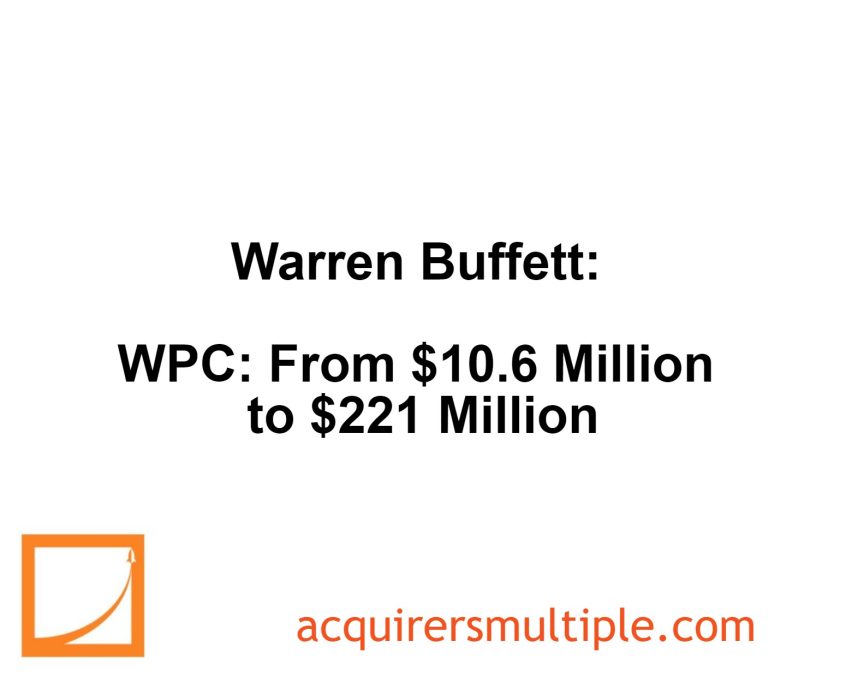In his 1985 Berkshire Hathaway Annual Letter, Warren Buffett explained how in mid-1973, he purchased Washington Post Company (WPC) shares at a quarter of their business value, capitalizing on a significant market undervaluation. Most investors, influenced by academic theories on market efficiency, ignored intrinsic business value.
By year-end 1974, despite WPC’s intrinsic growth, his holdings had depreciated by 25%. Kay Graham, WPC’s CEO, repurchased undervalued stock and enhanced business value, leading to substantial gains.
Buffett’s 1973 investment of $10.6 million grew to $221 million by 1985.
Here’s an excerpt from the letter:
We bought all of our WPC holdings in mid-1973 at a price of not more than one-fourth of the then per-share business value of the enterprise. Calculating the price/value ratio required no unusual insights.
Most security analysts, media brokers, and media executives would have estimated WPC’s intrinsic business value at $400 to $500 million just as we did. And its $100 million stock market valuation was published daily for all to see.
Our advantage, rather, was attitude: we had learned from Ben Graham that the key to successful investing was the purchase of shares in good businesses when market prices were at a large discount from underlying business values.
Most institutional investors in the early 1970s, on the other hand, regarded business value as of only minor relevance when they were deciding the prices at which they would buy or sell.
This now seems hard to believe. However, these institutions were then under the spell of academics at prestigious business schools who were preaching a newly-fashioned theory: the stock market was totally efficient, and therefore calculations of business value—and even thought, itself—were of no importance in investment activities.
(We are enormously indebted to those academics: what could be more advantageous in an intellectual contest—whether it be bridge, chess, or stock selection—than to have opponents who have been taught that thinking is a waste of energy?)
Through 1973 and 1974, WPC continued to do fine as a business, and intrinsic value grew. Nevertheless, by year-end 1974 our WPC holding showed a loss of about 25%, with market value at $8 million against our cost of $10.6 million.
What we had thought ridiculously cheap a year earlier had become a good bit cheaper as the market, in its infinite wisdom, marked WPC stock down to well below 20 cents on the dollar of intrinsic value.
You know the happy outcome. Kay Graham, CEO of WPC, had the brains and courage to repurchase large quantities of stock for the company at those bargain prices, as well as the managerial skills necessary to dramatically increase business values.
Meanwhile, investors began to recognize the exceptional economics of the business and the stock price moved closer to underlying value. Thus, we experienced a triple dip: the company’s business value soared upward, per-share business value increased considerably faster because of stock repurchases and, with a narrowing of the discount, the stock price outpaced the gain in per-share business value.
We hold all of the WPC shares we bought in 1973, except for those sold back to the company in 1985’s proportionate redemption. Proceeds from the redemption plus year-end market value of our holdings total $221 million.
If we had invested our $10.6 million in any of a half-dozen media companies that were investment favorites in mid-1973, the value of our holdings at year-end would have been in the area of $40—$60 million. Our gain would have far exceeded the gain in the general market, an outcome reflecting the exceptional economics of the media business.
The extra $160 million or so we gained through ownership of WPC came, in very large part, from the superior nature of the managerial decisions made by Kay as compared to those made by managers of most media companies. Her stunning business success has in large part gone unreported but among Berkshire shareholders it should not go unappreciated.
You can read the entire letter here:
1985 Berkshire Hathaway Annual Letter
For all the latest news and podcasts, join our free newsletter here.
Don’t forget to check out our FREE Large Cap 1000 – Stock Screener, here at The Acquirer’s Multiple:



